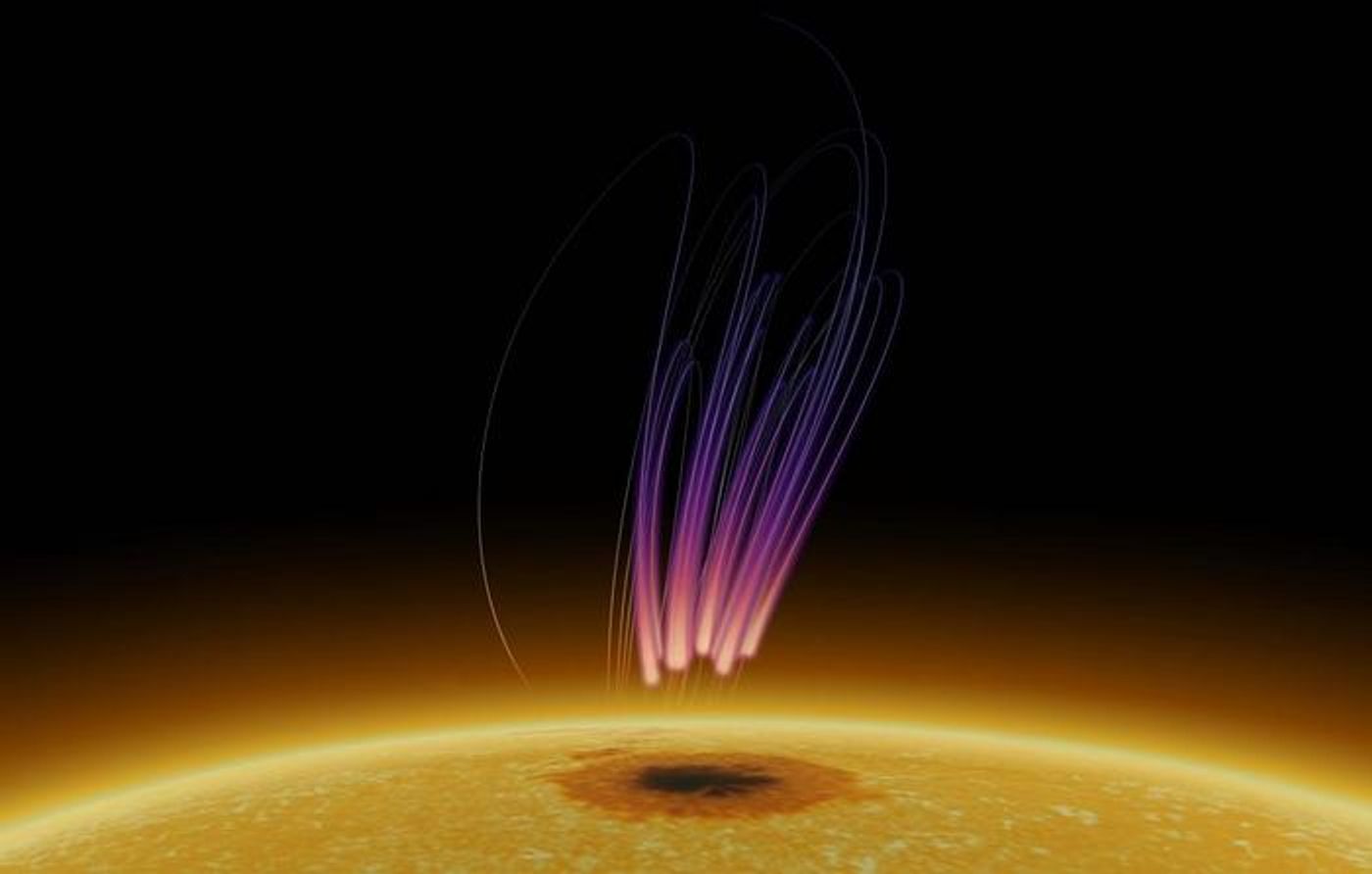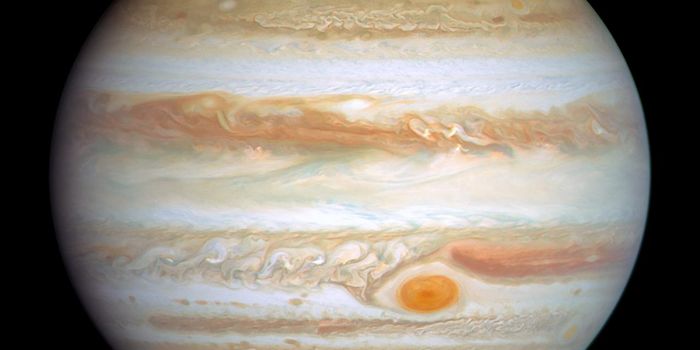Solar Radio Aurora: A Peculiar Discovery Almost 25,000 Miles Above Sunspots
A study published today in Nature Astronomy examines solar radio aurora observed almost 25,000 miles (40,000 kilometers) above sunspots using the New Jersey Institute of Technology’s Center for Solar-Terrestrial Research (NJIT-CSTR). This study was led by researchers from the New Jersey Institute of Technology and holds the potential to help astronomers better understand the formation of auroral radio emissions, which are frequently observed within planetary magnetospheres, including Earth, Jupiter, and Saturn, but have also been observed in low-mass stars, which are stars smaller than our own Sun.
Artist illustration of solar radio aurora above a sunspot like those commonly observed above the polar regions of Earth, Jupiter, and Saturn, and low-mass stars, and recent observations may reshape our knowledge of massive stellar radio bursts. (Credit: Dr. Sijie Yu)
“We've detected a peculiar type of long-lasting polarized radio bursts emanating from a sunspot, persisting for over a week,” said Dr. Sijie Yu, who is a scientist at NJIT-CSTR and lead author of the study. “This is quite unlike the typical, transient solar radio bursts typically lasting minutes or hours. It’s an exciting discovery that has the potential to alter our comprehension of stellar magnetic processes.”
Using NJIT-CSTR, the team reports the radio bursts observed on our Sun’s surface exhibit behavior like radio bursts observed on low-mass stars, although they report these bursts are much weaker. Additionally, the team notes these radio bursts could help explain how sunspots on other stars could be the source of radio bursts that astronomers detect from time to time, along with potentially challenging present models regarding magnetic field activity on several types of stars, as well.
“By understanding these signals from our own Sun, we can better interpret the powerful emissions from the most common star type in the universe, M-dwarfs, which may reveal fundamental connections in astrophysical phenomena,” said Dr. Dale Gary, who is a distinguished professor of physics at NJIT-CSTR and a co-author on the study.
What new discoveries will astronomers make about sunspots in the coming years and decades? Only time will tell, and this is why we science!
As always, keep doing science & keep looking up!
Sources: Nature Astronomy, EurekAlert!, American Museum of Natural History, New Jersey Institute of Technology









